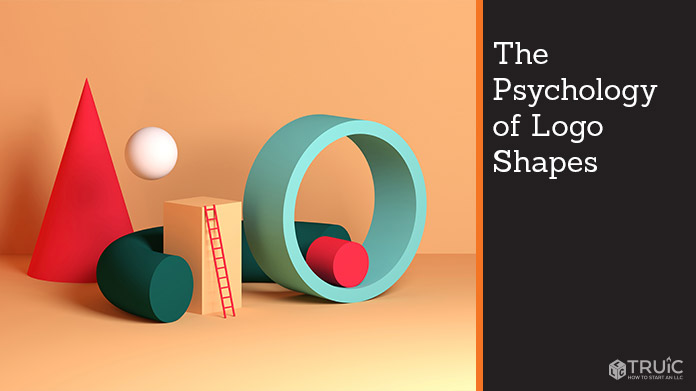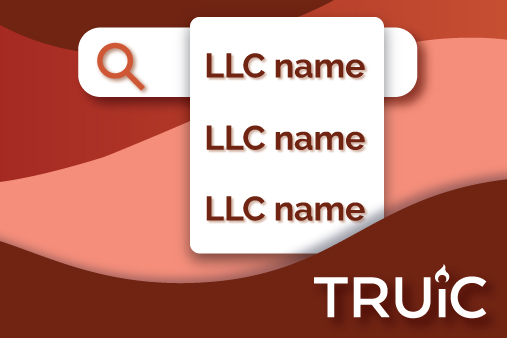The Psychology of Logo Shapes
Your mind is primed to recognize a wide variety of shapes, and each one has its own associations. You can use this kind of psychology to determine what type you should use on your logo. We’ll look at the most common options you might see and what each brand is trying to say about themselves. If you are feeling confident and ready to create your logo now, check out our Free Logo Generator and get the ball rolling.

Before You Start
So before you start to sketch out your interpretation of your logo, you have to write down the main brand values that you want your customers to really latch onto. Do you want your branding to say that you’re serious? Funny? Creative? Superior? Exclusive? One with the Earth?
As you narrow it down to just a couple main points, remember that the psychology behind shapes and colors will vary based on everything from cultural significance to a person’s life experience. If you still need help in defining your company traits, try our Branding Basics: How to get Started to get a better sense of where you can go.
The Versatility of the Circle
A friendly company wants its customers to feel drawn in and welcomed. The mere mention of a circle is closely associated with inclusion. Ellipses, ovals, eggs: the point of these shapes is to suggest a gentle and approachable demeanor.
Whether you use a circle within your logo or you encase your monogram inside of one, you can send a message that your company is dependable. The red and white bulls-eye of Target might suggest that you’re playing darts, but it’s also a symbol that the store is accessible to all.
Circles can also suggest authority, like a state seal or a sheriff’s badge. If you’re going with a stamp-style or a more traditional logo, you can adapt the circle to make your business look more official. This tip can really come in handy if you want your company to seem as though it’s been around for decades — even if you just started it yesterday.
Finally, circles can be viewed as playful. We might think of anything from beach balls to Slinkies. So if you were starting your own daycare center, you might adapt this concept to show that your business is tailor-made for young kids.
The Unconventional Qualities of Freeform shapes
Freeform drawings are generally organic and might be the result of anything from a rough drawing to a custom algorithm that makes your results look a little messy. In general, these shapes are not circles, but they also don’t have sharp edges either. For example, the logo for the band Guns n’ Roses uses the basics of the freeform shapes as a way to juxtapose violence and peace together.
These shapes are often associated with nonprofits or health-forward companies. So if you wanted to convey to your customers that your values have nothing to do with corporate America or putting profits above people, this might be the best choice for you.
The Geometric Beauty of Spirals
Spirals have a tendency to elicit complex feelings in a viewer. There’s a symmetry to them that captures the eye and forces the mind to sense the pattern. It’s quite mesmerizing. Companies might use spirals as a way to symbolize precision or balance.
Or you could choose to use it in a more straightforward manner. For example, if you were opening a math tutoring or a graphic design business, you’d be using it as a way to promote the superiority of what you do. This is one of the more uncommon shapes for a logo, which is why you might want to consider it if you’re having trouble deciding the right shape for you. And when you spend the time creating such an intricate shape, you may also want to learn more about How to Trademark Your Brand.
The Edgy Message Behind Angular Shapes
Maybe your company is anything but inviting to everybody. In fact, you want people to know that your customer demographic is an exclusive bunch. Your audience might be a little rougher around the edges. They might need to see a little grit in a brand before they decide it’s the one for them. For example, one of the Adidas logos is a series of rectangles that depicts an ascension. It subtly conveys to its audience that the brand is made for people who aren’t afraid to get dirty.
Not only will using sharp shapes make your brand a little bolder, but those angles can actually be used to convey power and intelligence too. If you opt for a square or a triangle, the psychological message is security behind your brand. Like spirals, angled logos are often associated with technology.
Straight lines, whether vertical or horizontal can be used to promote the groundedness of your company, one that people can come to rely on. You can also experiment with horizontal lines to connote speed or to secure the text of your branding with a stable background.
The Feelings of Symbolic Shapes
There are a wide variety of recognizable shapes that you can choose for your logo. Trees, hearts, suns, mermaids: plenty of companies will mix and match their shapes or a more nuanced drawing. A faith-based company might use a cross, a non-profit might use linked hands, and a pediatrician’s office might use a heart.
We can see the evocative shape comes into play with the World Wide Fund for Nature logo. The black and white panda reminds us of the beauty and magnificence that the organization is trying to preserve. It instantly makes us think of saving creatures that are important to our ecosystem and inspires us to keep fighting.
Trying Different Things
Chances are, your brand will have some conflicting values. Maybe you want to portray yourself as edgy, but you don’t want to alienate people. Maybe you want to portray that you’re a master negotiator and a cut-throat litigator, but you don’t want your clients to be nervous to work with you.
As you consider different shapes, you might want to combine the principles behind them to see which one works for you. If none of the basic structures appeal to you, try custom drawings instead.
For example, the Starbucks logo might be a symmetrical mermaid, but it’s also encased in a circle. Much like Target, it’s welcoming people in for a comforting cup of coffee. Nestle features a mother bird and her babies, but it also uses a horizontal line off of the “N” as a way to suggest a box shape for the text. This box might suggest stability to the viewer, which is fitting for a brand that’s been around since 1866.
There’s nothing easy about creating branding for a company when you can’t see into the future. It’s why designers and marketers alike will tell you to try and keep it as simple as you can. There’s also no need to worry if your shapes don’t always translate to consumers. After all, mermaids are rarely associated with coffee, and that hasn’t stopped Starbucks from making a name for themselves.
If you need help with desiging a logo for your brand, check out our top 5 best logo makers of 2021 and find the best tool to help you get a logo for your small business.

